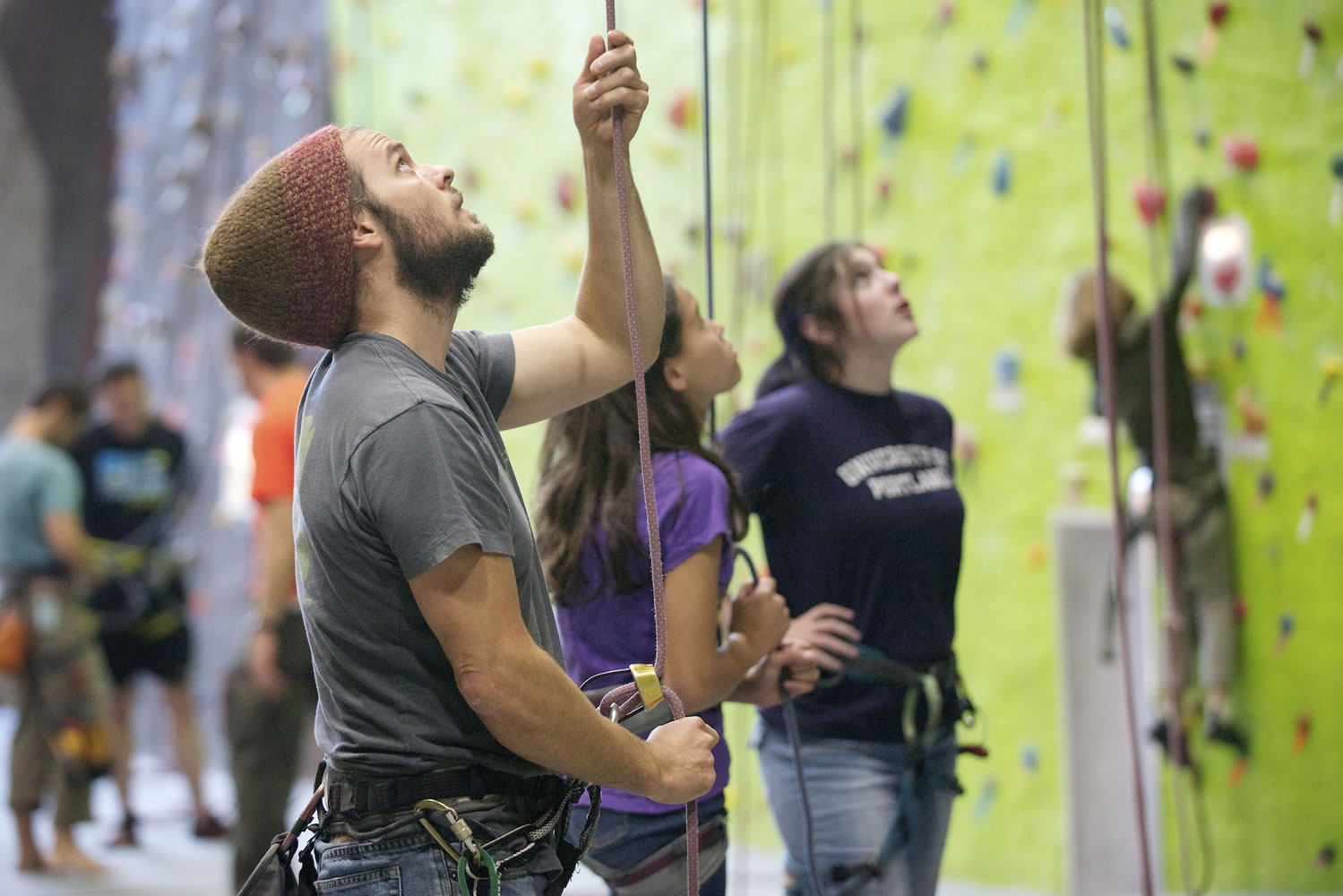Hanz Kroesen sifts through a bucket of climbing holds like a kid looking for the right Lego piece.
They're stored in a room behind the bouldering wall at The Source Climbing Center where you'll find the steel crossbeams and plywood frame that support the concrete slab on the other side.
As the main route-setter at The Source, Kroesen creates problems he knows people can solve.
"It's an interesting art, route-setting," Kroesen says.
Kroesen unbolts all of the holds and strips off every bit of tape, wiping the concrete slab clean before he starts route-setting. The new holds are organized by color, shape and size into neat little piles on the floor. Big holds, buckets, handles and jugs in one pile, and smaller holds, crimps, chips, pockets and pinches, in another.
With one foot on the wall and one foot on a ladder, he marks where the holds will go with colored tape. Then he goes back and bolts the holds in. Each hold can support 400 to 600 pounds.
Kroesen looks back at his work and starts to climb the route he just made. He moves like a cat along the bouldering wall -- graceful and precise, even in tennis shoes. It's similar to choreographing a dance, he says. It's about being inventive and creating your own classics. There's pressure to get it just right. If people don't like the routes, they won't return to the climbing gym.
But if he sees people climb it again and again, he knows he's successful.
Kroesen likes to watch and wait for the "aha!" moment when a climber works through a problem and figures out the series of moves.




